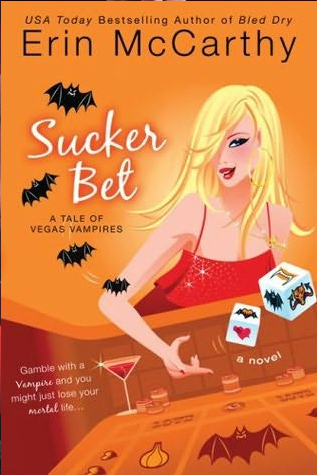I received this book for free from the library in exchange for an honest review. This does not affect my opinion of the book or the content of my review.
Source: the library
How to Create the Perfect Wife: Britain's Most Ineligible Bachelor and His Enlightened Quest to Train the Ideal Mate
by
Wendy Moore
biography, non-fiction in Hardcover edition that was published by Basic Books on April 9, 2013 and has 343 pages.
Explore it on Goodreads or Amazon
It rates a “5” for how well Moore wrote, although I would dearly love to give it a “-5” for her subject! I hate to think what Moore’s state of mind was upon finishing this…
A biography about the Georgian poet, Stoic, philosopher, and hypocrite — Thomas Day.
My Take
Right out, I’m telling you that I greatly disliked the subject of this biography. My god, the man was an egotistical, selfish, rude, obnoxious hypocrite. Moore did write this very well — it read like a story. Only, it’s a story I kept wanting to put down. The more I read, the more I despised Thomas Day.
The best I can say about his story [as opposed to Moore’s story *grin*] is that I enjoyed the connections with scientists, thinkers, and writers.
The way in which Rousseau’s Émile was distorted out of context and how many children had to suffer because their parents were nuts! I’m so angry with Richard Edgerton for putting his son through this and then abandoning him when it wasn’t Dick’s fault! Arghhhh!! The one benefit to it was that Edgerton tried to find a compromise between the previously accepted method of educating children and Rousseau’s general theory, and eventually he and his daughter Maria wrote Practical Education, a book that influenced education for decades and promoted “educational toys, models, books, maps, and scientific apparatus” in the playroom.
A poet, Day, and his best friend, John Bicknell, wrote The Dying Negro. Day later went on to write a popular children’s series, Stanford and Merton, which promoted “innocent virtue and stoical courage”.
Other friends included Richard Warburton-Lytton who helped found Oxford’s Grecian Club, and William “Oriental” Jones, an expert linguist, who was translating the Arabian Nights back into Arabic.
Erasmus Darwin (Charles’ grandfather) was part of the Lunar Society of Birmingham (dubbed the Lunaticks) whose other members include James Watt of steam engine fame; Matthew Boulton, an industrialist; the potter Josiah Wedgwood; Dr. William Small, who was the closest to a father figure Day had; the vicious and selfish writer Anna Seward; and, James Keir, who was a chemist and inventor.
Part of the oddness of this story is Moore’s assuring us that so many people liked Day, and yet, it’s all tell. Which probably isn’t a fair comment as this isn’t fiction. But it doesn’t change the fact that I don’t understand why anyone would like the man. He had no manners and would hold forth forever on his ideas, running roughshod over anyone.
The heart of this story is Thomas Day, a young man-turned-Stoic as a result of his time at boarding school. And what a nut job! It’s appalling that his friends all went along with his “enlightened attempt” to “educate” — hah, torture and abuse is more like it! — the perfect mate for this selfish, hypocritical jerk. He wanted a woman who would slavishly hang on his every word, accept it as law, and be willing to undergo the most horrible hardships — Day was greatly influenced by Rousseau’s Émile and took Rousseau’s words as hard-and-fast rules — giving up all forms of enjoyment, and be willing to live totally isolated in the worst sort of house. Oh, god, just thinking of it has me furious all over again. I’d love to get my hands on that ass! Naturally, Day continued his socializing and the pursuit of his interests. Only his wife must be willing to give up her writing, music, socializing, family, and any other enjoyments, so that she could cater to all his needs.
A philosopher and poet, Day soon determined to “become the very model of the model virtuous man”. He was also determined to “create” the model of a perfect mate and was influenced by Ovid’s Metamorphoses and the myth of Pygmalion. Ovid’s story and the books Seward and Edgerton wrote about Day’s experiments with Sabrina influenced George Bernard Shaw’s Pygmalion, Fanny Burney’s Evelina, Henry James’ Watch and Ward, Maria Edgeworth’s Belinda, and Anthony Trollope’s Orley Farm.
Ann Kingston was how the London Foundling Hospital named the baby they accepted; Day renamed her Sabrina Sidney. Ann Grig, the second orphan who became Lucretia, got lucky fast. Sabrina’s friends included Dr. Charles Burney, a musician who eventually opened up a boy’s school in Greenwich. She eventually took over managing the Burney School whose students included James Haliburton, Thomas Foxwell Buxton — and Thomas Griffiths Wainewright.
The best you can say of the man is that he was generous with his money to the poor and friends whose businesses needed a loan; was anti-slavery; pro-education; and, thought women were equal to men, insisting on protecting them whether they wanted it or not…
…as long as you weren’t his idea of a mate!
Interesting side mentions included David Hume; Laurence Sterne (we keep meeting him in Diana Gabaldon’s Outlander series); Marquis de Sade; Captain Thomas Coram who founded the London Foundling Hospital; John Constable who married one of Sabrina’s nieces, Maria Bicknell; Samuel Johnson; Mary Wollstonecraft; Joseph Wright; a fascinating reveal about John André who has appeared in a couple of other books I’ve recently read — C.C. Humphreys’ Jack Absolute and Donna Thorland’s The Turncoat (odd that Humphreys and Thorland both depict André as gay, but Moore only mentions that his proposal was rejected by Honora Sneyd); Benjamin Franklin; and, the Americans, Henry and John Laurens. The comment about the Rhône in Avignon as a refuge for upper-class people on the run was interesting.
The Cover and Title
The cover is curious with its geometric splits: the two shades of beige for the general background cuts the primary title from the subtitle and the author’s name, nothing unusual there. It’s the four slices through the 18th century figure of a woman that have me wondering. What’s the purpose? I have to wonder if it’s a subtle indication of the different stages of Day’s interference with Sabrina.
The title sums up the entire story as it’s Thomas Day’s theory on How to Create the Perfect Wife: Britain’s Most Ineligible Bachelor and His Enlightened Quest to Train the Ideal Mate. Pay attention to italics on the book’s cover — there’s irony in every word!










